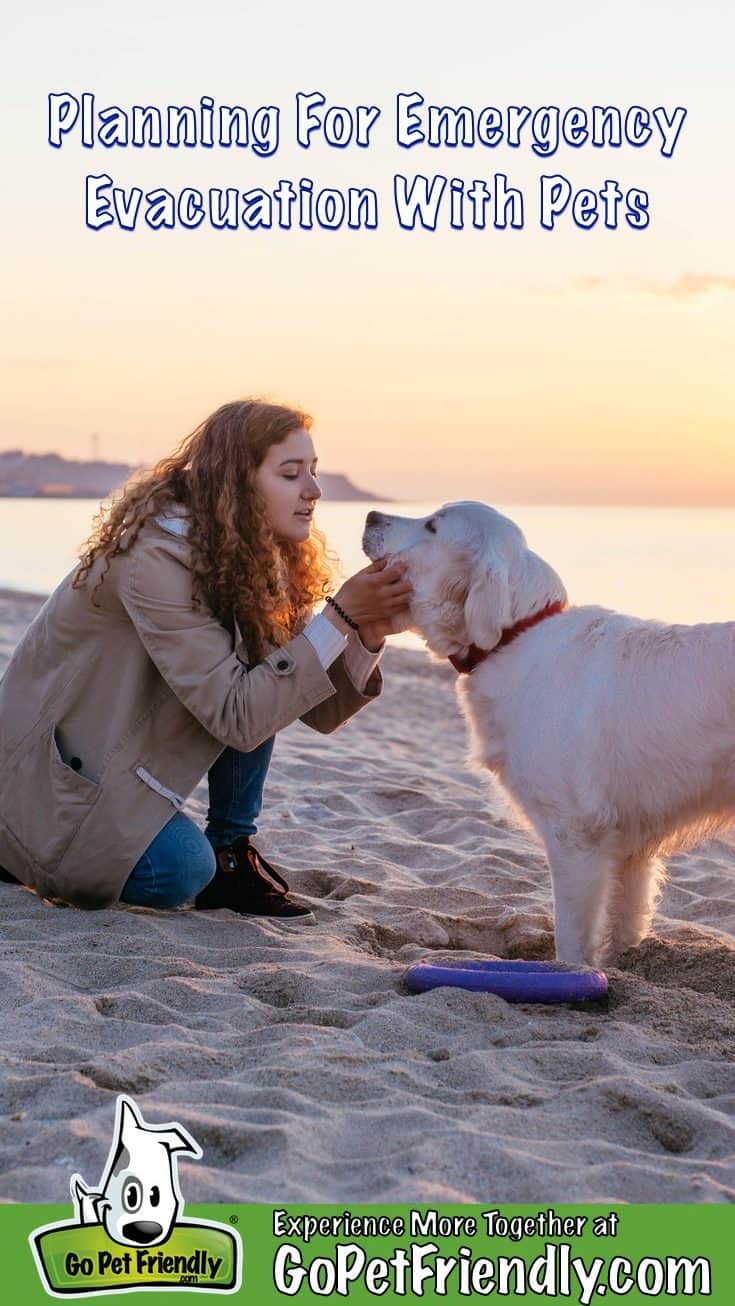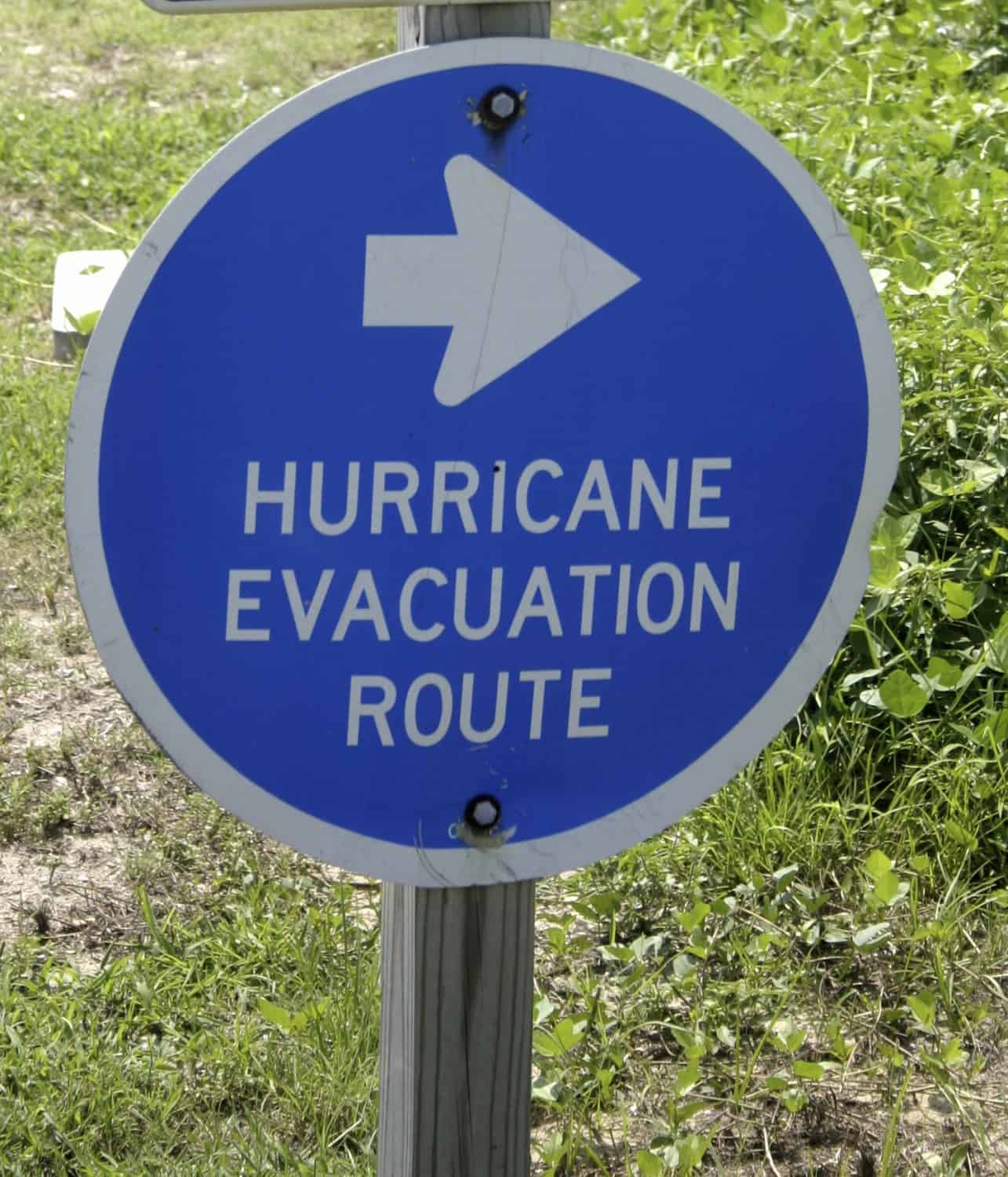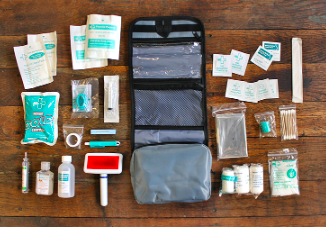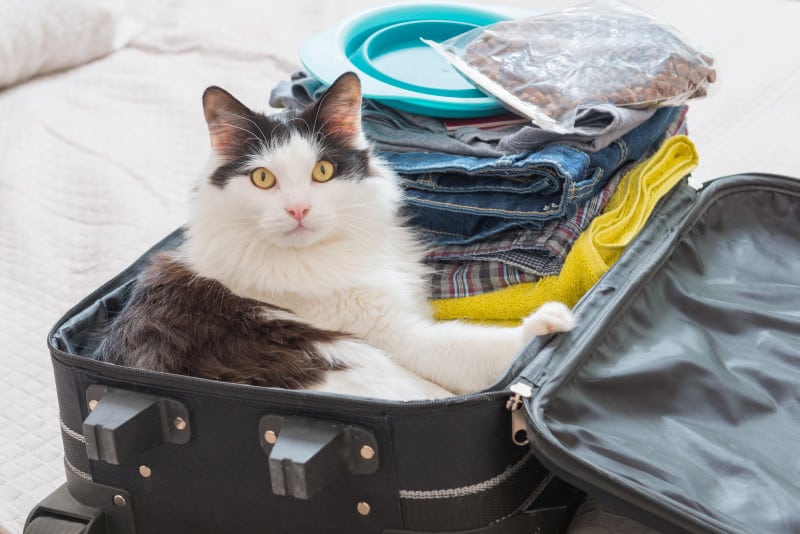[ad_1]
Preparing for an emergency evacuation requires extra planning when your family includes pets. Taking the time now ensures that you and your furry loved ones will have what you will need if you are uprooted.

Evacuations happen for all kinds of reasons. Hurricanes, floods, forest fires, train derailments and industrial accidents could force you to leave your home without notice. Being prepared in advance is essential. And having an emergency escape plan is even more important when you have pets. Follow these steps to put your plan in place today!

Make an emergency escape plan that includes your pet’s needs
Pre-Pack Your Pet’s Go-Bag
During an emergency evacuation, you may have very little time to pack yourself and your pets! Many people keep a packed “go-bag” for the humans in the family. To avoid forgetting the essentials your pet will need, it is important to pre-pack their emergency kit as well. Here are the things you will need:
- Food and water for a week. Pack your pet’s food in an airtight, resealable container. Then set a calendar reminder to swap the food every three months so it’s always fresh. Include lightweight food and water bowls, and don’t forget a can opener if your pet eats canned food.
- Medicines for a week. Medicines should also be packaged in a leak-proof, resealable container and changed every three months. If your pet’s medications need to be refrigerated, carry a small cooler with a note reminding you to take the medications out of the refrigerator and ice packs out of the freezer.
- Proof of vaccination and ownership. Emergency shelters may not accept tags as proof of vaccination, so carry a copy of your pet’s most recent vaccination certificate. If you and your pet need to be separated, you will also need a photo to make posters. And when your pet is found, you may need proof of ownership (like a microchip number) to claim it. Store all three in a sealed, waterproof bag.
- A first aid kit.
LEARN MORE ⇒ Make a Pet First Aid Kit for Your Car

- An extra collar with ID tag and leash. Your pet probably has an ID tag, but if cell service is down or you’re not at your home phone number, they may not have the best contact information for you. Stick a blank label on the back of an ID tag and put it in your emergency kit with a permanent pen. This way, you can write your temporary information on it and attach it to your pet’s collar.
- A muzzle. Some emergency shelters only allow muzzled dogs. Your dog will be more comfortable if he has been used to wearing a muzzle beforehand. Pack a soft muzzle that you can easily put on your pup if needed. And refresh his training every three months when you change his food and medicine.
- A familiar toy, blanket, or bed. Being evacuated is stressful for everyone. Having a little comfort at home will help ease any anxiety your pet may be feeling.
- A kennel or carrier. If you plan to take your pet with you to an emergency shelter or hotel, make sure you have a carrier or kennel with you. Some emergency shelters require pets to be confined, and hotels may also require a carrier or kennel if you need to leave your pet unattended in the room.
- Garbage bags and/or litter box with litter.
LEARN MORE ⇒ Tips for traveling alone with pets

Find a place where pets are welcome
The second step in preparing for an emergency escape with pets is determining where you will go. Not all emergency shelters allow pets, and those that do may have strict guidelines. Familiarize yourself with your community’s evacuation facilities and policies so you know your options.
If your local shelter doesn’t allow pets, follow the additional steps below to plan for your family’s safe evacuation.
Plan multiple escape routes
The path of hazardous weather conditions and possible road closures could impact your planned evacuation route, so map out two or three potential destinations. Then locate pet-friendly accommodations in each city.
Choose your accommodations
If you plan to stay with family or friends, call to ask if they will accommodate your pet as well. Then, refresh your memory on how to be a thoughtful guest when traveling with pets.
If you plan to stay at a hotel or campground, use a website like GoPetFriendly to find the best options. Be sure to inquire about breed and weight restrictions and additional pet fees. When you make your selections, print out the name, address, phone number and driving directions to each location and keep them in your emergency kit.
LEARN MORE ⇒ Pet policies for all US hotel chains

It takes time to prepare for an emergency evacuation with pets. But it’s an investment that will save you a lot of stress and heartache should the need arise. And making a plan that takes into account your needs as well as your pets will keep everyone safe!
(Visited 2,206 times, 1 visits today)

Comments are closed, but trackbacks and pingbacks are open.